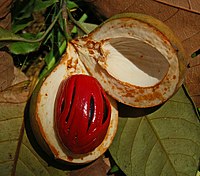
Photo from wikipedia
Doubled haploid (DH) technology in oat has not reached the same stage as in other cereals leading to its application in plant breeding. The objective of this investigation was to… Click to show full abstract
Doubled haploid (DH) technology in oat has not reached the same stage as in other cereals leading to its application in plant breeding. The objective of this investigation was to increase the effectiveness of Avena sativa L. haploid embryo germination obtained by the distant crosses with maize. Developed embryos (obtained from 22 genotypes) were transferred on five germination media: MS (Murashige and Skoog, Physiol Plant 15:473–497, 1962) with 3% sucrose, pH 5.8 (control medium), and 190-2 supplemented with 6 and 9% maltose. The pH of 190-2 was adjusted to 5.5 and 6.0. Of all tested genotypes, 591 haploid embryos were obtained, almost half of them (279) germinated. The rate of haploid embryo germination induced on 190-2 was 6.92%, while in MS it was 3.25%. The sugar and its concentration significantly affected the germination of haploid embryos. The highest percentage of haploid embryo germination (9.11%) and DH lines production (1.64%) was achieved on 190-2 with 9% maltose and pH 6.0. All DH lines are incorporated to breeding programs for the development of new cultivars.
Journal Title: Acta Physiologiae Plantarum
Year Published: 2018
Link to full text (if available)
Share on Social Media: Sign Up to like & get
recommendations!